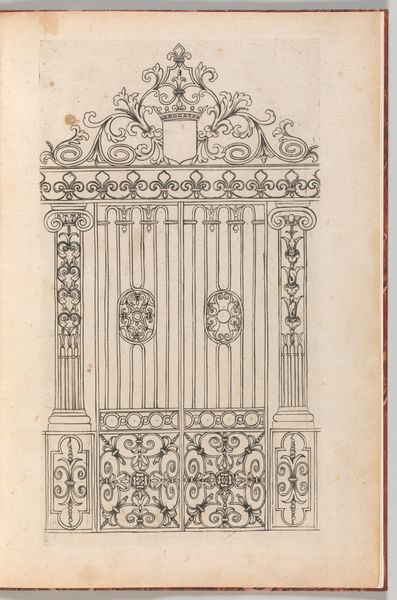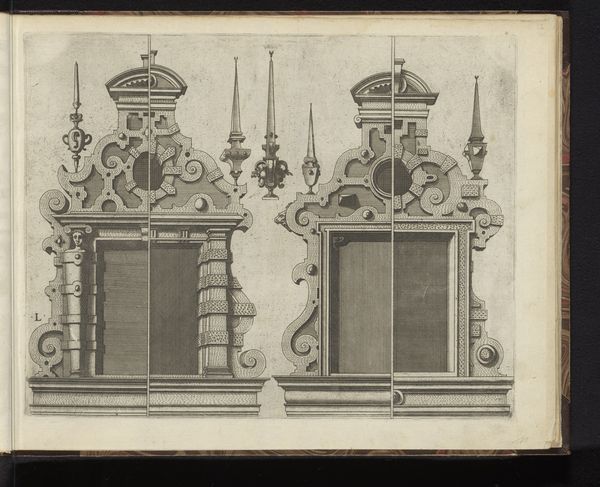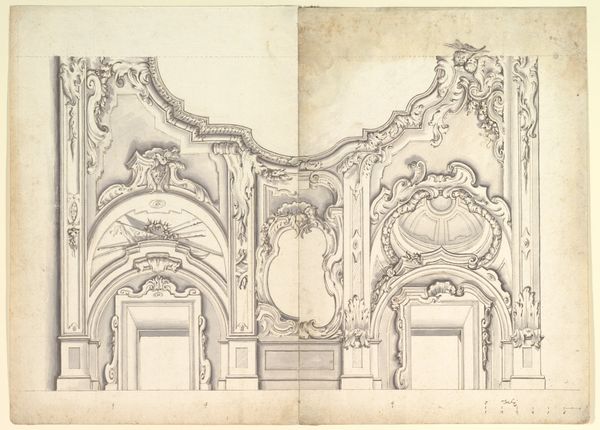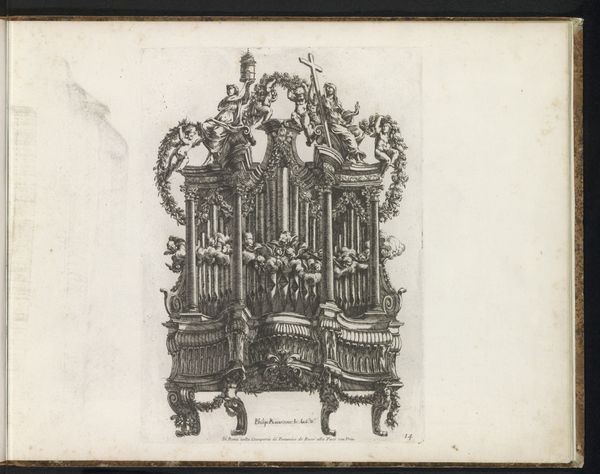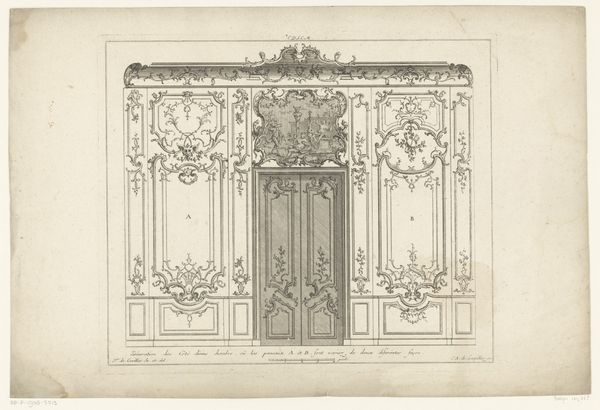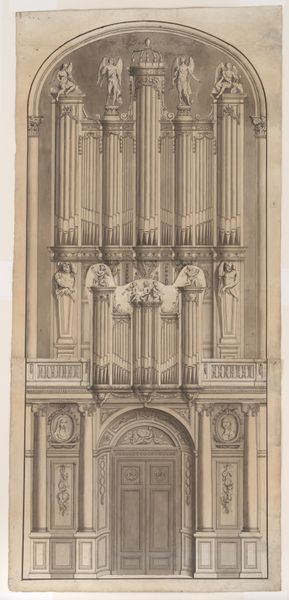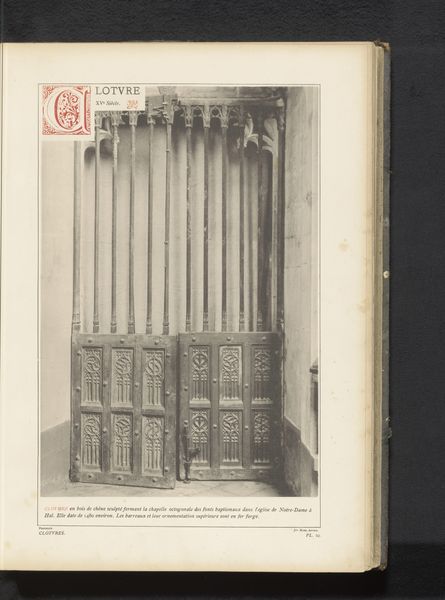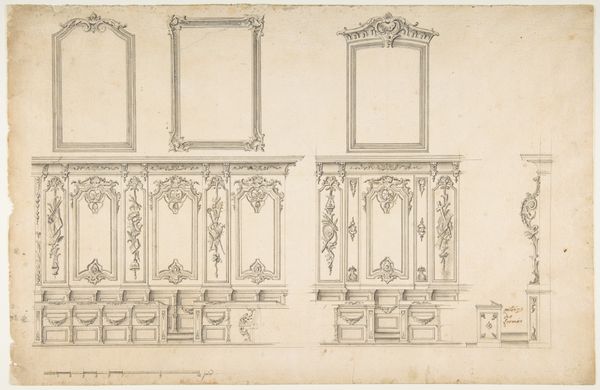
Chamber Organs, from Chippendale Drawings, Vol. II 1760
0:00
0:00
drawing, print, pencil, architecture
#
drawing
#
baroque
# print
#
coloured pencil
#
pencil
#
architecture
Dimensions: sheet: 9 x 12 7/8 in. (22.9 x 32.6 cm)
Copyright: Public Domain
Curator: This print, “Chamber Organs, from Chippendale Drawings, Vol. II," comes to us from around 1760, credited to Thomas Chippendale. It resides here with us at the Metropolitan Museum of Art. The medium includes pencil, colored pencil, and drawing techniques. Editor: It feels so airy! Despite the rigid structure of the organ pipes, the overall effect is delicate and almost fantastical. I’m struck by the lightness of the pencil strokes, especially in the floral ornamentation. Curator: Exactly, I agree. Chippendale was a master craftsman and designer. His drawings reveal so much about 18th-century artisanal practices, particularly in furniture making but branching into related musical instruments as well. One can consider these not just architectural plans but prototypes and proposals too. Editor: Right! I wonder about the commissioning process. Were patrons closely involved in dictating design elements, or did they grant artisans like Chippendale greater creative freedom? It speaks to power dynamics inherent in art production. Plus, the cherubs feel so overtly gendered. The presence of these images surely made music accessible only to a certain class. Curator: These drawings acted as part of an economy, creating commodities for display, desire, and social climbing. The paper itself, the pigments, and the tools – each was sourced and deployed as an explicit function within a complex network of merchants and makers, all reflective of period trade structures. Editor: I also wonder how the Baroque style seen in these designs resonated within the shifting sociopolitical landscape. Organs were, obviously, inherently religious tools and, thus, often signs of oppressive regimes that needed dismantling or reforming. Curator: Fascinating! Did those ideological debates influence stylistic evolution? If these instruments functioned in the home as secular amusements, it reveals changing attitudes toward pleasure and domestic space. Editor: Perhaps music, or the ownership of its physical means of creation, served as an assertion of social standing at that point. I'm intrigued how social and political context seeps even into such ornate renderings of these impressive pieces of equipment. Curator: I agree. There's a compelling intersection of design, craft, and labor to contemplate in every detail. Editor: Absolutely, bringing together art history and contemporary theory really underscores these powerful conversations around these pieces.
Comments
No comments
Be the first to comment and join the conversation on the ultimate creative platform.

